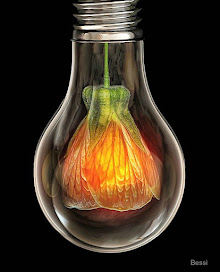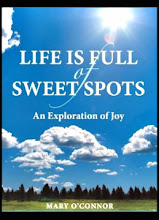 |
| Stripped Cat by Léonard Tsuguharu Foujita (1924) |
Our story begins and nearly ends for a cat, introducing us to its peculiar owner and an unsavory trick he played on the feline with the express purpose of ending its life. Consider the following four points before engaging with the tale:
- № 1: Cats. They’re an interesting subject because they’re cats. And they let you know it.
- № 2: People. Always hiding behind the mask of personality. Some are more convincing than others.
- № 3: Writers. They’re observant and take notes. Make acquaintance with one and you may appear as a character in one of their stories.
- № 4: Doctors. Most are guided by the Hippocratic Oath. Others are gilded by reputation, clever accountants and club memberships.
“The Sense of Smell in Cats” appeared in the science journal
Nature a little over 90 years ago. The one-paragraph letter to the editor was written by F.W. Edridge-Green of 99 Walm Lane, Willesden Greene, London N. W. 2. It was dated September 13, 1932 and published in the October 1, 1932 edition of the publication. The tone is expert, detached and gothic.
I HAD a favourite cat which was having fits and becoming dangerous, so, to destroy it as painlessly as possible, I inserted several grains of morphia in the centre of a piece of foie gras which was cut in two, great care being taken that no morphia was split on the outside. The cat on being shown the foie gras expressed in every way its eagerness for it, but when it got within three feet of the foie gras, turned round and looked at me with intense astonishment, and then after another sniff walked away, though previously it had always worried for a small piece. The special point is that the cat could detect something dangerous though the strong smell of the foie gras, though morphia, even in considerable quantities, has to most persons only a faint odour.
Reading this leaves little doubt that the physician’s house became haunted when he and his cat were no longer there. Imagine the paws of generations of cats that resided in the house, sensitized to dormant energy emanating from the kitchen floor. When perceived, a sensation accompanied by the aroma of foie gras forebodes the appearance of a feline apparition hungry for a taste of its master’s liver. Cats sense the specter with their whiskers, their owners attuned to its icy plaintive yowls. Confabulation, I know, but it paints the picture best.
Frederick William Edridge-Green (1863-1953) was a physician and "expert" on color perception. The ophthalmologist, who grossly underestimated the olfactory perception of his cat (a species that is a natural-born hunter) wrote on the subject of sight, color blindness and memory. Books published in his area of specialty are available, in addition to a
journal article in which the esteem with which he held himself and his work weren’t reciprocated (this was delivered with academic brevity and evisceration in the concluding sentence).
 |
Concluding paragraph in the British Journal of Ophthalmology by J. Herbert Parsons, August 1920. Ibse dixit refers to an unproven assertion.
|
After his death in 1953, Dr. Edridge-Green’s portrait was donated to the Hunterian Museum at the Royal College of Surgeons of England in London. The painting is currently available as ready-made wall art for anyone with a taste for it.
Artist Frederic Dudley Walenn (1869-1933) painted Dr. Edridge-Green’s portrait. In it, the physician sports a lupine beard that completely obscures his mouth, jaw and neck. It would be uncouth to say it invokes an invitation to fleas, but that can’t be helped.
 |
| Image of Dr. Edridge-Green via The Royal College Surgeons of England |
Consider the confusion a master’s nearly unreadable face wrought upon his cat over the years. The portrait resembles a man about to go through “the change” and emerge as a werewolf. Wouldn't you, dear reader, at your most myopic, have fits and become dangerous if you had to live with the agony of looking at an obfuscated face by day, suffering the consequences in your sleep at night? A mouthless presence of a face in a sea of hair leaving only the eyes to speak?
Walenn’s body of work is respected and pleasing. Perhaps the artist had a petulant sitter before him who was overly concerned with posterity, demanding unreasonable revisions to his portrait, the painter giving in and painting the doctor’s mouth shut with his paint brush. The portrait, whatever one thinks of it, was bequeathed to the Hunterian Museum at the Royal College of Surgeons in England by Edridge-Green. It is absent from their online collection.
 |
Via the National Institute of Health, National Library of Medicine
|
An interesting black and white photograph of the ophthalmologist paints a different picture in shadow and light. His bearded face is less consumed by facial hair, ruling out hypertrichosis as a diagnosis inspired by Walenn's oil portrait. The contrasting accent of dyed black hair behind a flourish of gray paints a different picture, a hat on his knee taking prominence at the forefront of the composition. The doctor is older here and appears comfortable with himself. A kitten would fit quite nicely in this picture, but that would be softening the rough edges of Edridge-Green's character to a fault.
Consider the possibility that Edridge-Green’s cat no longer served as an emotional surrogate, becoming “the other” in the eyes of its owner due to bad behavior or illness (a mean disposition or epilepsy). The doctor's story as reported in Nature seems more like confabulation than truth, a weak attempt at erudition (acknowledging his cat's better-than-expected sense of smell). Fact: the doctor failed to entice his beloved cat to its death with morphine-laced foie gras. This is not material for compassion or bragging rights. It smacks of pathology, narcissism and a faltering G-d complex.
 |
The Latest Application in Scientific Principals by Louis Wain
|
In closing, the following was filed under the category "
Rubbish Colleagues, 1900 RR/15/38" on the Royal Society's website. The facts and categorization reveal much about Edridge-Green’s character:
Among the treasure trove of referee reports is one by physicist Shelford Bidwell (inventor of a precursor to the fax machine) about a paper on 'The evolution of the colour sense' by Frederick William Edridge-Green in 1900. Bidwell describes the author as ‘a crank’, and the paper as not only plagiarized but also ‘rubbish of so rank a character that no competent person could possibly take any other view of it’:
"Having long ago recognised in him all the well-known characteristics of a 'crank', I have carefully avoided entering into any discussion with him or expressing any opinion as to his views."
He then goes on to suggest that if the Society takes issue with ‘this admission of bias’ they should refer the paper to someone else. Edridge-Green’s tests for colour blindness were nonetheless adopted by the Royal Navy.
The report by referee Shelford Bidwell, including the summary, reveal a lack of professionalism and ethics on the part of Dr. Edridge-Green. It was issued 32 years before the doctor wrote to Nature about the alleged cat episode. F.W. Edridge-Green died on April 17, 1953. His obituary in the British Journal of Ophthalmology refers to the doctor as “a controversialist” whose conclusions sometimes lacked the basis of fact. There is no mention of family left behind in Edridge-Green’s obituary. Not even a cat.
Notes, Curiosities & Thanks:
Morphia is an archaic term for morphine. It's also the first name of the historical queen consort of the Crusader kingdom of Jerusalem,
Morphia of Melitene, who was of Armenian descent.
Cats are better smellers than humans. This was true in Dr. Edridge-Green’s time, when science knew less about feline and human olfaction. Cats have larger olfactory epithelium (membranous tissue located in the nasal cavity that is the peripheral organ for the sense of smell) and more olfactory receptors (transmitters of smells) than humans. Cats also possess a vomeronasal organ (aka Jacobsen’s organ) that affects
sexual, feeding and social behaviors. The role of the vomeronasal organ in humans is unknown and considered vestigial (translation: under-researched).
The Royal Society was formerly known as The Royal Society of London for Improving Natural Knowledge. It's the United Kingdom's version of
The National Academies of Sciences in the United States.
 |
Maréchal Niel Roses by Henri Fantin Latour(1883)
The flowers have a strong raspberry, tea and violet scent. |
Dr. F.W. Edridge-Green married Minnie Hicks on April 28, 1893. An excerpt from the wedding announcement in the Middlesex Courier says: "...it is evident that Dr. Edridge-Green is a gentleman of considerable attainments. The bride, Miss Minnie Hicks, second daughter of Dr. F.R. Hicks, of Hendon Grove, is as distinguished socially and for her personal charms as Dr. Edridge-Green is for his scientific attainments...Inside the church looked very pretty, the altar being decorated with white flowers and the pews themselves gay with posies and the delicate scent of the Maréchal Niel rose being most notable."
The Edridge-Green family included two sons. Their first son, Henry Allen Edridge-Green, was born on July 9, 1894. Henry
died of wounds acquired at the age of 24 on November 7, 1918, while serving as a Lieutenant in the Royal Air Force during WWI. Frederick Nigel Edridge-Green, the couple's second son, was born on June 23, 1897. He died on May 25, 1898, when he was less than a year old. Minnie Edridge-Green died on February 14, 1901, after seven years of marriage and the loss of her youngest child. She was 30 years old when she died on Valentine's Day.
Thanks go out to Wendy Warner, who provided assistance with ancestry research related to Dr. F. W. Edridge-Greene.
This post is dedicated to Judith Emlyn Johnson, Professor Emerita of English Literature and Women's Studies at the University at Albany in New York State. Her "Gothic Horror and Fiction" class was one of my favorites. Johnson is a fiction writer, poet, and spoken word artist.


















